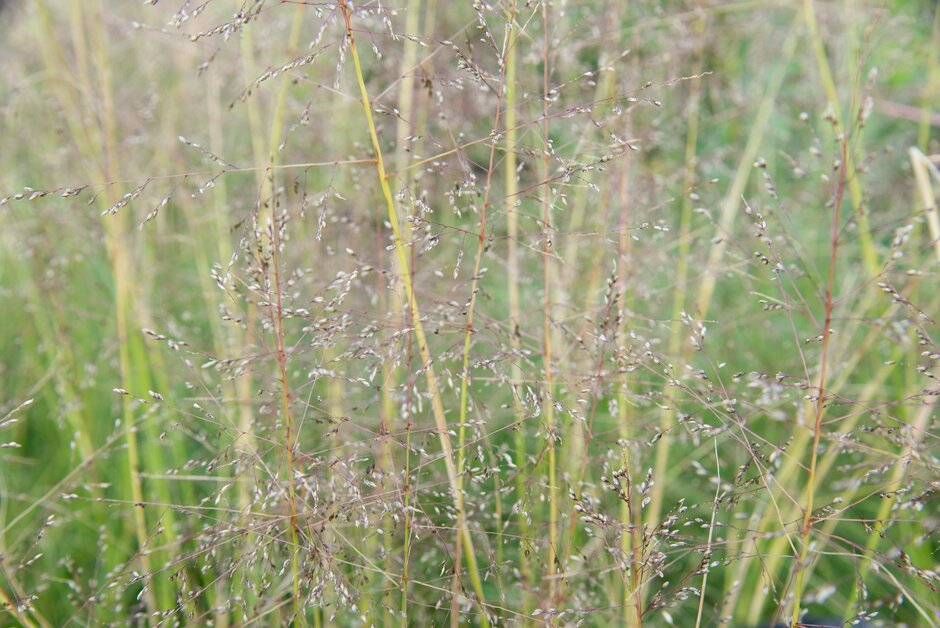Sporobolus airoides
alkali sacaton
A tufted perennial grass to 1.2m high forming mounds of slender, grey-green, arching leaves that turn golden-orange in autumn and fade to light bronze-brown in winter. Airy panicles of tiny pinkish-red flowers are borne above the leaves in summer
Size
Ultimate height
1–1.5 metresTime to ultimate height
2–5 yearsUltimate spread
0.5–1 metresGrowing conditions
Moisture
Well–drainedpH
Acid, Alkaline, NeutralColour & scent
| Stem | Flower | Foliage | Fruit | |
| Spring | Green Grey Silver | |||
|---|---|---|---|---|
| Summer | Pink Red | Green Grey Silver | ||
| Autumn | Gold Orange | |||
| Winter | Bronze Brown |
Position
- Full sun
Aspect
South–facing or West–facing
Exposure
ShelteredDrought resistance
Yes Hardiness
H5Botanical details
- Family
- Poaceae
- Native to GB / Ireland
- No
- Foliage
- Deciduous
- Habit
- Clump forming
- Genus
Sporobolus are a large genus of plants in the grass family which are prairie or savannah plants. They produce a soft cloud of small flower heads, turning to seeds at a later date, the stems of which can grow up to 20 inches in height above a clump of arching leaves. Leaves are bright green during the summer, turning to yellow to orange in autumn and brown in winter.
- Name status
Correct
How to grow
Cultivation
Grow in well-drained soil in a sunny position
Propagation
Propagate by seed or by division
Suggested planting locations and garden types
- City and courtyard gardens
- Coastal
- Cottage and informal garden
- Gravel garden
- Prairie planting
- Flower borders and beds
Pruning
Cut back to near ground in early to mid-spring
Pests
Generally pest-free
Diseases
Generally disease-free
Get involved
The Royal Horticultural Society is the UK’s leading gardening charity. We aim to enrich everyone’s life through plants, and make the UK a greener and more beautiful place.
